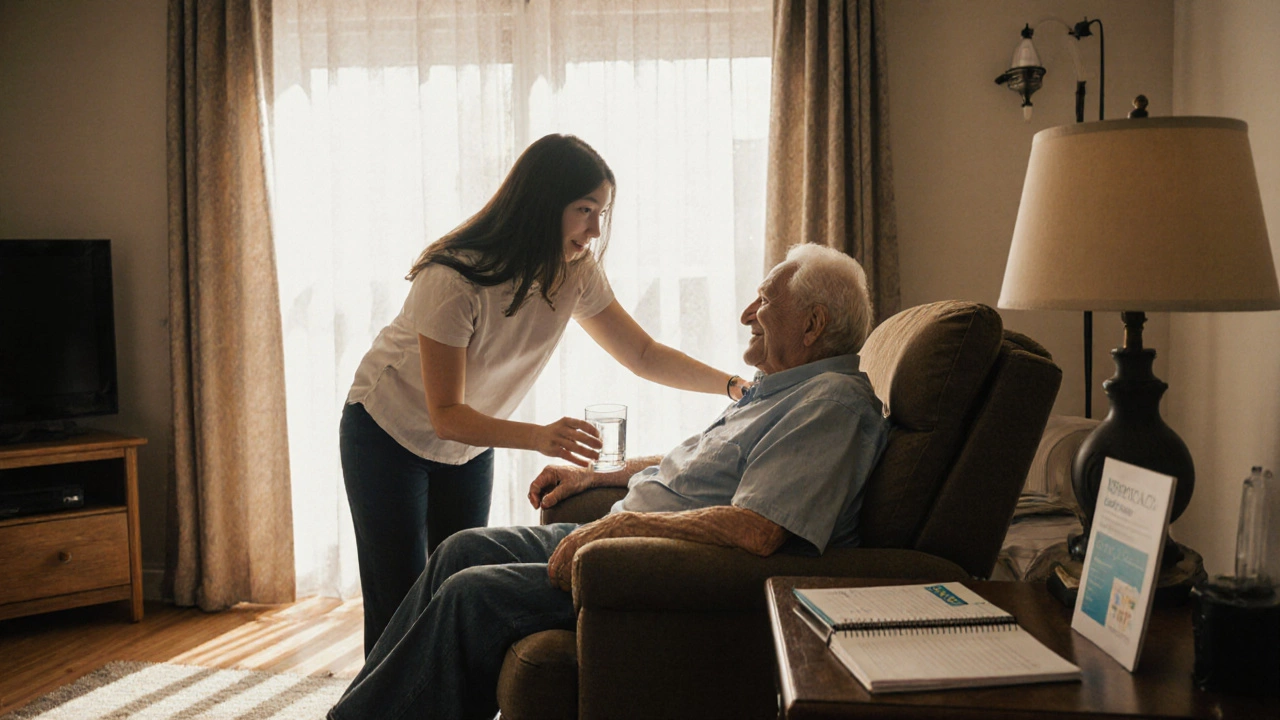Paid Family Caregiver: What It Means and How It Works
When a family member takes on the daily job of caring for an older relative or someone with long-term needs—and gets paid for it—that’s a paid family caregiver, a family member who receives compensation for providing hands-on care at home, often instead of using professional agencies. Also known as family caregiver paid through public funds, this setup is becoming more common as people choose to keep loved ones at home rather than move them into care facilities. It’s not the same as volunteering. This is work. It means managing medications, helping with bathing, preparing meals, arranging transport, and often handling paperwork—all while balancing a job, kids, or other responsibilities.
The money usually comes from one of three places: direct payments from the person being cared for, government programs like Direct Payments from local councils, or through a personal budget tied to a care assessment. In the UK, if someone qualifies for social care support, they can choose to receive cash instead of services—and then hire a family member to provide that care. But there are rules. The caregiver can’t be the spouse or civil partner in most cases. The person needing care must have been assessed by social services. And the payment must reflect fair pay for the tasks done, not just a gift.
Many families don’t realize this option exists. They assume care is either free (volunteer) or expensive (agency). But a paid family caregiver, a family member compensated for providing essential daily support to a relative. Also known as informal caregiver receiving payment, it’s a practical middle ground that keeps people in familiar surroundings and gives caregivers recognition for their time and skill. It’s also about fairness. If you’re spending 30 hours a week lifting, cleaning, and coordinating doctors’ visits, you’re working. You deserve to be paid like you’re working. And when you are, it reduces guilt, stress, and burnout—something we see in posts about volunteer burnout, the emotional and physical exhaustion that comes from giving too much without support or compensation. Also known as caregiver exhaustion, it’s a real risk when care is unpaid.
Some families worry about taxes or legal issues. The good news? If it’s set up properly through social services, the payment is usually tax-free under certain allowances. You still need to keep records, but you’re not breaking the rules—you’re using them. And if you’re not sure where to start, check with your local council’s social care team. They can walk you through assessments, budgets, and paperwork.
What you’ll find in the posts below are real stories and practical guides from people who’ve walked this path. You’ll see how families manage payments, what happens when money runs out, how to set boundaries, and how to avoid resentment. You’ll also find links to resources about local support groups, community-based networks that offer advice, emotional backup, and practical tips for caregivers. Also known as caregiver networks, they’re often the quiet lifeline that keeps people going. This isn’t about theory. It’s about what works when you’re tired, stretched thin, and still showing up every day for someone you love.

How to Get Paid by the Government to Take Care of a Family Member
Learn how to get paid by the government to care for a family member in the UK. Discover Carer’s Allowance, Direct Payments, Scottish top-ups, and how to avoid common mistakes that stop people from claiming what they’re owed.

How to Get Paid by the Government to Take Care of a Family Member
Learn how to get paid by the government to care for a family member through Medicaid waivers and state programs. Find out who qualifies, how much you can earn, and how to apply.